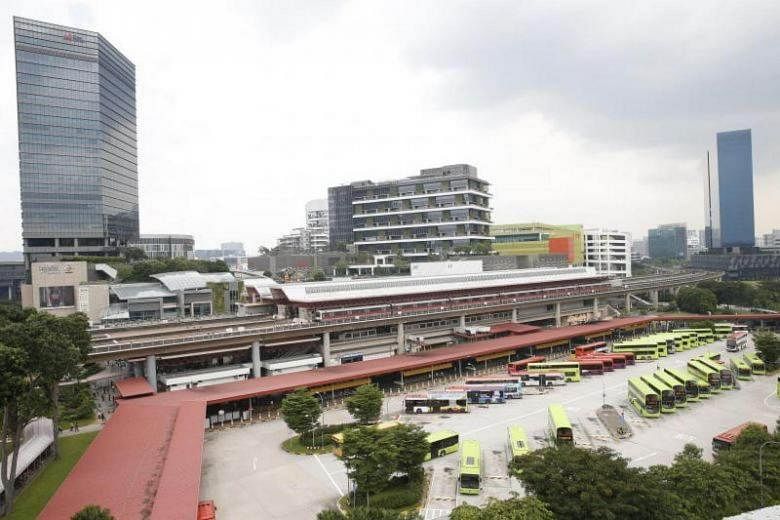The future Jurong Region Line (JRL) will use specially designed carriages which are smaller in size than those found on other MRT lines to give the trains more manoeuvrability on the tracks.
This is because the 24km, 24-station JRL is built above ground and its alignment has been designed to navigate the existing developments in built-up areas, the Land Transport Authority (LTA) said.
"The smaller train cars would allow the trains to navigate tighter curves in areas constrained by existing developments," LTA said, in response to queries from The Straits Times.
The JRL, which will serve residents in Choa Chu Kang, Boon Lay and the future Tengah estate, along with new developments like the Jurong Innovation District and Jurong Lake District, will open in three phases, starting from 2026. It is Singapore's seventh MRT line.
JRL trains will each have three cars, each with a length of 18.6m and width of 2.75m, LTA said.
In comparison, train cars for existing MRT lines, such as the Circle Line, are 23.6m by 3.2m.
In terms of capacity, a JRL train car can carry between 150 and 200 commuters, while a regular MRT car can carry between 200 and 300. JRL trains, however, will have the flexibility to have a fourth car coupled, to boost the carrying capacity.
An LTA spokesman said a light rail transit (LRT) system would have been unsuitable, as it is more adapted to straight-line alignments, such as in airports.
The LRT system is "less effective in coping with sharp turns and undulating terrain in built-up areas", LTA said, adding that the JRL's alignment has been designed to ensure that its trains would be able to cope with the turning radii.
While newer MRT lines, such as the Circle Line, Downtown Line and Thomson-East Coast Line, are all built underground, the JRL bucks the trend by being constructed above ground - a move LTA said would allow it to build the line faster and at a lower cost.
National University of Singapore transport researcher Lee Der-Horng said the route of the line and future plans for Jurong might have contributed to LTA's decision. He said that given the JRL's route alignment, which is H-shaped, going underground could result in a much more complex design, compared to other lines.


